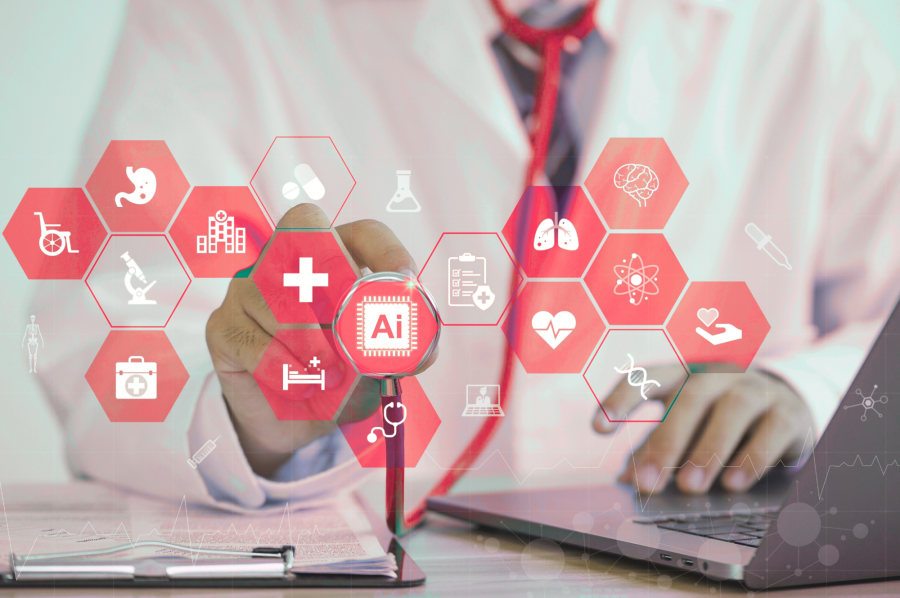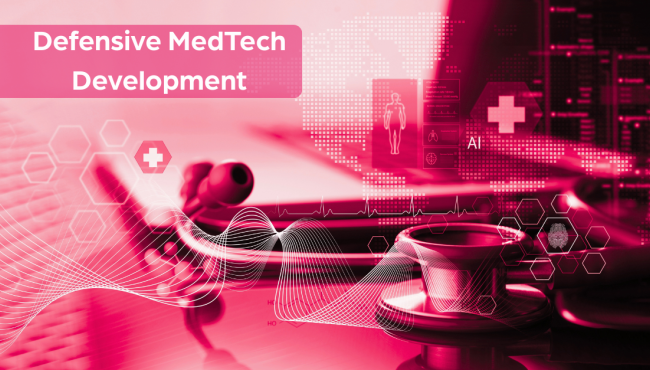AI is Transforming Medical Device Development — But Who is Keeping it Safe?

The promise of AI in MedTech is real. But without expert human oversight, the risks are too.
When people think of artificial intelligence (AI) in healthcare, they often picture dramatic breakthroughs, such as robots performing surgery or algorithms diagnosing disease with superhuman accuracy. However, the most impactful shift may be less visible: a subtle, systemic transformation in medical device development. AI is making development processes faster, safer and more personalised. Rather than replacing engineers and clinicians, it is becoming an increasingly powerful tool in their hands. However, to unlock AI’s full potential the right way, it must be built on safety, effectiveness and ethical use. Curated data sits at the core of AI-powered innovation in MedTech, and it’s the fuel that may enable smarter design, faster development and safer patient outcomes.
Data: the fuel behind AI innovation
Data has always played a vital role in medical device development. However, today, the volume and variety of available data are unprecedented. Developers now have access to a vast and complex ecosystem of information sources. This includes patient records, wearable devices, IoT sensors, clinical trials, social care records, performance metrics, environmental inputs and even economic indicators. At Camgenium, for example, we work with massive volumes of high-quality, real-world patient data, including national NHS datasets, which provide detailed, up-to-date insights into patient needs and outcomes. This data is central to identifying unmet needs, designing safer solutions and demonstrating effectiveness.
With access to this wealth of information, AI can uncover patterns and relationships that human analysts might miss. Nevertheless, it only delivers true value when AI models are trained on the right, high-quality data and guided by human expertise. Traditional development relied heavily on experience, prototyping and iterative testing. Now, when applied correctly, AI can uncover meaningful insights much earlier in the process; sometimes even before a prototype is built. This ability to accelerate and inform decisions is reshaping every stage of the development lifecycle.
Transforming the development pipeline with AI
The role of AI in MedTech development is diverse and growing, and covers every stage from early design through to regulatory submission and manufacturing. It enables teams to simulate countless design scenarios, predict outcomes and refine requirements before a prototype is even built. In line with ISO 14971, the international standard for risk management in medical device design, AI can help identify and simulate potential failure modes by analysing historical data from similar devices. By detecting these failure modes early in the design process, teams can reduce costs, and with AI support, create more efficient, higher-quality devices.
In software development, AI speeds up coding, documentation and review processes, though expert engineers remain essential to guide the AI and validate outputs. By streamlining these tasks, AI can reduce development time by more than 50%. However, medical device software involves much more than just coding; validation, verification and testing are crucial, especially when patient health and safety are at stake. Additionally, AI can help identify potential issues and edge cases that even experienced developers might overlook.
As the field evolves, distributed AI systems are emerging to offer even more personalised and context-aware capabilities. In these systems, central AIs collaborate with edge AIs to provide highly specific medical information tailored to individual patients. For example, a distributed AI system could predict a patient’s asthma risk based on air quality, pollen levels and their clinical history, and then feed this information to a breath analyser device that informs the patient when and how to self-medicate to stay healthy. While these advancements promise highly customised care, they also require careful management and human supervision to ensure patient safety. In addition, clinical trial design can be supported by using AI to identify suitable patient cohorts and address risks due to bias.
AI can also play an important role in streamlining regulatory compliance, which is often a major reason for the high cost and slow pace of medical device design. By ensuring documentation meets standards, minimising risks and helping create submission files, AI can save significant time and effort. With best practices and technologies constantly evolving, AI helps identify subtle shifts in regulatory requirements, using tools like Neuro Linguistic Programming to stay ahead of changes.
In short, AI has the potential to cut years off medical device development and commercialisation times, reducing costs and improving patient outcomes. However, these advancements must be overseen by experienced professionals to ensure safety and effectiveness throughout the process.
Ethics, supervision and accountability of AI tools
AI, when used as a tool to support the safe development of medical devices, is not a medical device itself because it doesn’t produce a direct medical outcome. Its effectiveness depends on expert use to ensure safety and minimise the risk of harm and its use must be validated to ensure that it performs as expected and without risk of introducing error. Rigorous processes are needed to ensure it is developed and applied in a way that is safe for patients.
By comparison, AI models that are medical devices in their own right are trained on carefully curated, validated datasets and meets strict regulatory standards. These models must be verified and clinically justified at every stage. When applied appropriately, they can help personalise treatment, predict adverse outcomes and adapt device performance based on individual patient data including physiology, medical history and lifestyle. However, AI cannot independently verify its own outputs. Human insight and expertise provide the clinical oversight, verification and validation essential to ensuring patient safety and meeting regulatory standards.
Conclusion
AI is a powerful tool that has the potential to accelerate every stage of medical device development; however, it cannot build a safe or effective device on its own and the misuse of AI poses significant risks. AI is a powerful enabler of next-generation devices, but it needs skilled custodians who can guide its application responsibly.
About the author
Dr Philip Gaffney OBE is the CEO of Camgenium, a Cambridge based company specialising in medical device development and deployment. With over seventeen years of experience, Camgenium has been at the forefront of developing AI systems for medical devices. One of its key contributions is a widely deployed algorithm, developed in collaboration with C2-Ai, that helps manage NHS waiting lists and ensures patient safety by reducing the risks of long delays. As a recognised expert in the field, Dr Gaffney leads the company in providing regulatory-compliant services for the design, validation and deployment of AI-driven medical devices.


